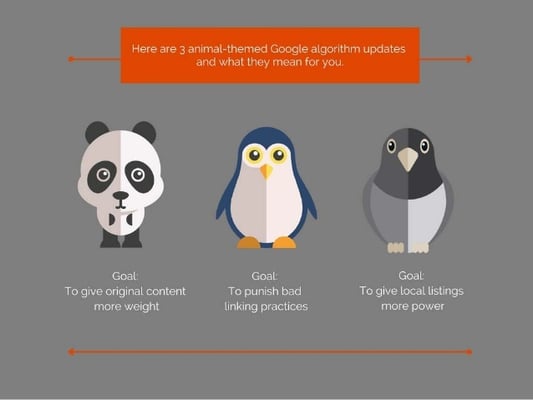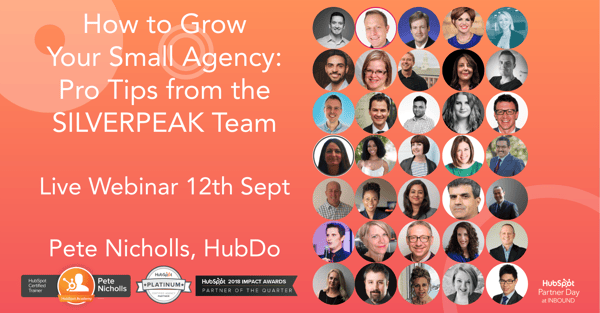Earlier this August, Google’s public search liaison Danny Sullivan announced that a new Google broad core algorithm update has rolled out. Now before anything else, we want you to focus on two things here:
- It is a Core Algorithm update
- It is broad

So you might be thinking, “Google makes hundreds of algorithm changes per year. What’s biggie about this one?”
Most named algorithms in the past (Panda, Penguin, Pigeon, etc.) are rolled out for specific improvements in Google’s algorithm. Panda was implemented to combat thin and low quality content, Pigeon for local SEO spam, and Penguin for spammy links. As you’ve noticed, they all had a specific purpose and Google often told webmasters what they were trying to accomplish. In turn, we popped the hood of our website and made the necessary remedies.
 (Via SlideShare)
(Via SlideShare)
A core update is different.
A core update is about the main search algorithm itself. We all know that Google considers 200-500 factors and signals as they rank websites in their search results. In a core update, Google changes the order, importance, values, and weights of these signals. And because Google said that it’s a broad one, we reckon that Google changed the order of most ranking factors. Google will not reveal the changes they’ve made for the same reason why KFC’s secret recipe of 11 herbs and spices remains a mystery.
How Webmasters Can Conquer These Core Updates?
The first thing you need to do is check your Search Console and observe whether your site has lesser visibility on your target queries. If you found that your site has had weaker search appearance performance lately, this doesn’t mean that your website has a quality issue.
According to Google:
“As with any update, some sites may note drops or gains. There’s nothing wrong with pages that may now perform less well. Instead, it’s that changes to our systems are benefiting pages that were previously under-rewarded....”
However, this doesn’t mean you should just sit there and do nothing, especially if your website’s performance is taking a dive! As a responsible and competitive webmaster, you should:
- Analyse Your Website - Look at your site and see if the main pages are still optimised with your target keywords.
- Check the Top Performers and Do a Competitor Analysis - The best way to understand Google’s preference for a certain search query is to personally check the top performers. Wear the shoes of your target audience and understand why those websites are more relevant. Do they have meaty and informative content? Is the user intent clear? How’s their site architecture?
As with any Google update, it’s best practice to understand the impact the update could make to your online visibility. Check your Search Console for any messages and review the data on and around the period of the update. Google will never share in depth or technical information about their updates so reading between the lines may not be the best option for webmasters!
Facts are stubborn things, so always refer back to your Analytics and Webmaster Control Panels to review the finer details. Being aware of the latest core algorithm update and understanding how your website can stay afloat in this ever-changing digital landscape is all part of maintaining good online visibility and digital health.
SEO isn’t easy, is it? So be sure to regularly check our blog for the latest news and juicy guides in the world of search and inbound marketing.


